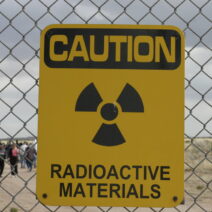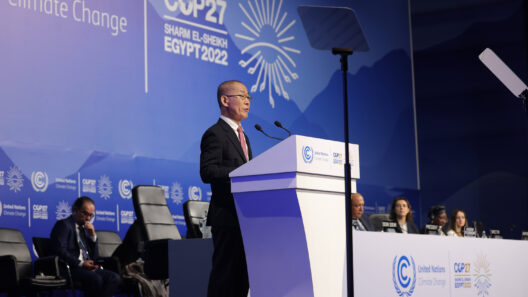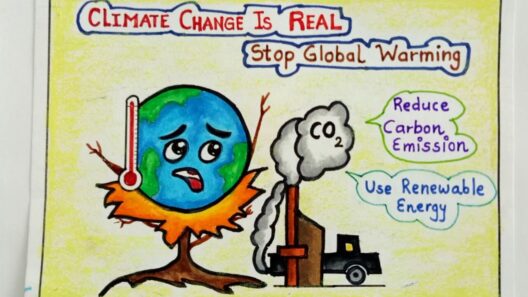As our world continues to warm, one can’t help but wonder: what unexpected challenges might emerge from this climatic metamorphosis? Among various growing concerns, mosquito-borne diseases stand out as a particularly alarming phenomenon. These illnesses, transmitted by seemingly innocuous creatures, could wreak havoc on public health as temperatures rise. Understanding the interrelationship between climate change and these diseases is paramount for devising effective preventive measures.
Mosquitoes, the vectors responsible for diseases such as dengue fever, Zika virus, malaria, and West Nile virus, thrive in warmer and wetter climates. With the global temperature projected to increase by 1.5 to 2 degrees Celsius by the middle of the 21st century, regions previously inhospitable to these insects may soon become breeding grounds for outbreaks. But what does this really entail for humanity? The mere idea of mosquitoes proliferating in new territories poses a significant public health question.
The biology of mosquitoes is closely tied to environmental conditions. Warmer temperatures accelerate their life cycle, enabling these insects to reproduce more rapidly. Furthermore, increased humidity facilitates the survival of mosquito larvae, thereby amplifying their population density. Consequently, urban areas, often characterized by stagnant water sources and high human activity, become prime targets for mosquito invasion. This holds particularly true for tropical regions, which are predicted to see substantial habitat expansion as global temperatures continue to rise.
Climate change is not merely a linear progression; it introduces variability to weather patterns. The erratic nature of rainfall may lead to periods of excessive precipitation followed by drought, creating ideal conditions for mosquito breeding. Elevated temperatures coupled with abundant rain can result in the perfect storm for the proliferation of these pests. Hence, urban planners and policymakers must recognize the potential of shifting ecological balances when devising strategies to mitigate the risks associated with mosquito-borne diseases.
One of the largest challenges lies in the socio-economic repercussions of these diseases. Populations in developing regions are often disproportionately affected, as they have limited access to preventive care and health education. Increased mosquito populations can strain healthcare systems that are already under pressure due to infectious diseases. This exacerbation poses critical questions regarding economic stability, public health infrastructure, and community resilience in an age of climate adversity.
Moreover, the global warming phenomenon complicates legislative and health responses. Public awareness and education must evolve to incorporate strategies for dealing with potential pandemics stemming from mosquito-borne diseases. Yet, despite advancements in medical science, developing a universal vaccine against these diseases has proven elusive. Adaptive challenges require that health care systems not only react but also proactively adjust to shifting ecological and climatic realities.
The correlation between increased warming and disease dissemination is stark; however, solutions do exist. Integrated vector management tactics are pivotal in controlling mosquito populations. These approaches emphasize collaboration between different sectors, combining environmental management with public health initiatives. For instance, implementing sustainable urban planning by reducing standing water can significantly impact mosquito breeding. Additionally, community engagement and education empower local populations to take an active role in controlling mosquito habitats.
The use of biocontrol agents, such as the introduction of natural predators or microbes, could serve as environmentally friendly alternatives to chemical pesticides. Genetic technology also offers prospects for innovation, including genetically modifying mosquitoes to limit their reproductive capabilities directly. However, ethically sound and scientifically valid approaches must govern these future interventions due to potential ecological consequences.
Public engagement remains crucial in tackling mosquito-borne diseases in a warming world. Health campaigns must not only focus on educating people about personal preventive measures but also promote broader environmental stewardship. People must understand that their day-to-day choices contribute to a larger narrative concerning climate change and public health. Thus, responsibility rests on individuals, communities, and governments alike to forge a united front against this multifaceted challenge.
Nonetheless, a future riddled with increased mosquito-borne diseases does not have to be a foregone conclusion. Climate adaptation can be accomplished through concerted efforts at the local, national, and global levels. Enforcing robust policies on environmental conservation and climate action can mitigate the worst impacts of climate change. Innovations in public health infrastructure, combined with a commitment to sustainability, will be our most steadfast allies in this battle.
Ultimately, the question stands: can we outsmart these tiny adversaries in the face of an ever-warming planet? A multifaceted approach that integrates science, policy, and community action may hold the key to navigating this precarious intersection of climate and health. By fostering a cooperative attitude towards environmental protection, we can simultaneously safeguard ourselves from the looming threats posed by mosquito-borne diseases.







